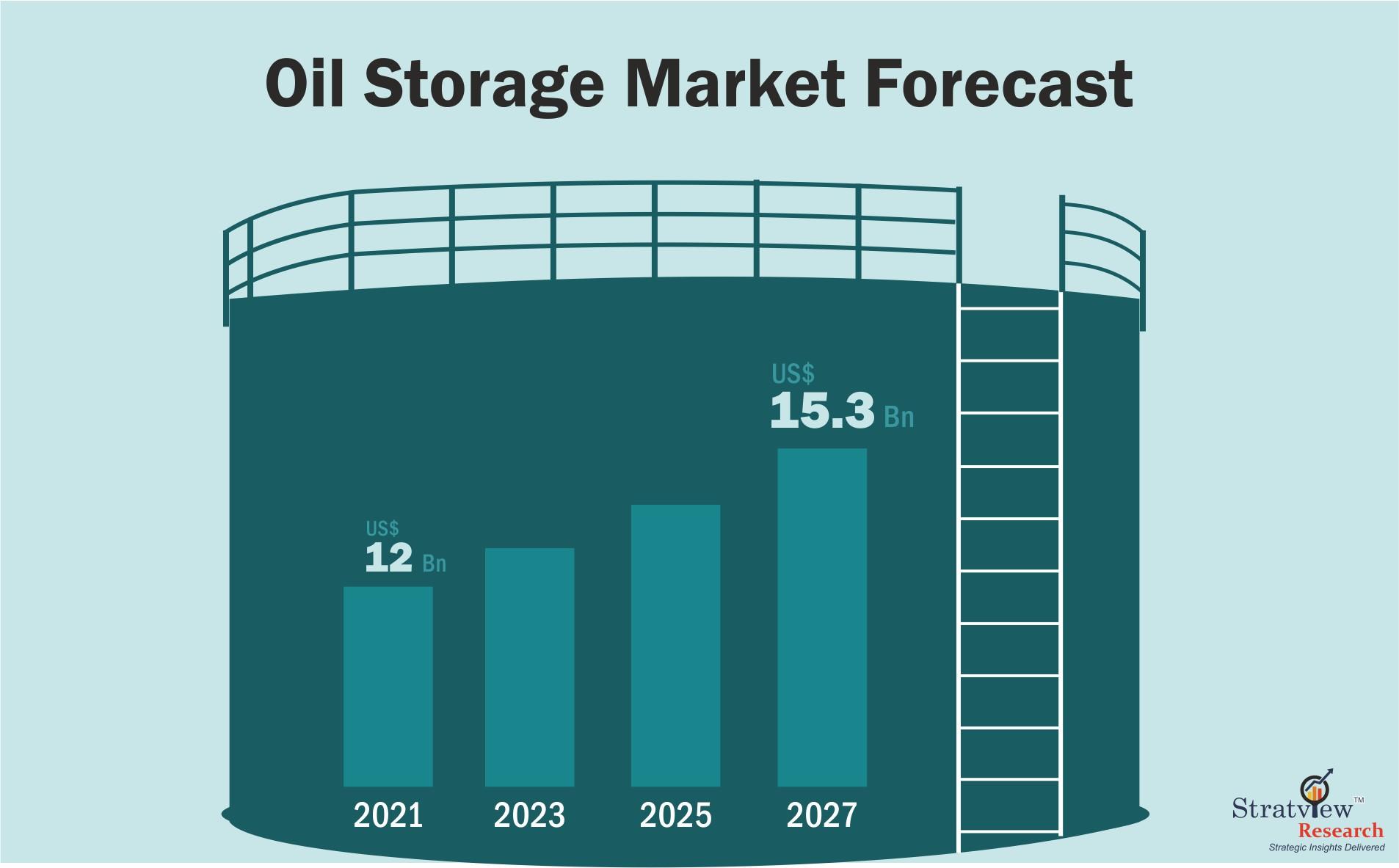According to Stratview Research, the oil storage market was estimated at USD 12.0 billion in 2021 and is likely to grow at a CAGR of 4.2% during 2022-2027 to reach USD 15.3 billion by 2027.
In a world that is constantly evolving, the energy sector stands as a critical player in shaping the future. Central to this landscape is the Oil Storage Market, a dynamic and integral component of the global energy infrastructure. As we delve into the trends and insights of this crucial market, we uncover the key factors fueling its growth and the innovative strategies propelling it into the future.
**1. Strategic Geopolitical Shifts: The oil storage market is continually influenced by geopolitical dynamics, and recent shifts have sparked a reevaluation of strategic reserves. Countries are reassessing their storage capacities to navigate uncertainties and ensure energy security. This trend emphasizes the critical role that oil storage plays in the geopolitical chessboard, influencing both national and global energy strategies.
**2. Adoption of Advanced Technologies: Technology is reshaping the landscape of oil storage facilities. From the integration of Internet of Things (IoT) devices for real-time monitoring to the use of Artificial Intelligence (AI) for predictive maintenance, advanced technologies are enhancing efficiency, minimizing risks, and optimizing storage operations. These innovations not only streamline processes but also contribute to a more sustainable and resilient storage ecosystem.
**3. Focus on Environmental Sustainability: As global awareness of environmental issues grows, the oil storage market is embracing sustainable practices. From implementing eco-friendly storage solutions to reducing carbon footprints, companies are exploring ways to align their operations with environmental goals. This shift not only addresses concerns about climate change but also enhances the industry's reputation for responsible and sustainable practices.
**4. Strategic Reserves and Emergency Preparedness: In the face of unforeseen events, the importance of strategic reserves has come into sharper focus. The oil storage market is witnessing a renewed emphasis on emergency preparedness, with countries and companies alike recognizing the need for robust storage capacities to navigate disruptions in the global energy supply chain.
**5. Flexible Storage Solutions: Flexibility has become a key buzzword in the oil storage sector. With changing market conditions and fluctuating demand, the ability to adapt storage capacities quickly is crucial. Flexible storage solutions, including modular facilities and dynamic storage configurations, are becoming increasingly popular to meet the ever-shifting demands of the energy market.
**6. Digitalization and Data-driven Insights: The era of big data has not spared the oil storage market. Digitalization and data-driven insights are transforming the way storage facilities operate. From optimizing inventory management to predicting market trends, harnessing the power of data is enabling more informed decision-making, ultimately improving the efficiency and profitability of oil storage operations.
**7. Global Storage Infrastructure Expansion: With the rise in global energy consumption, the demand for oil storage infrastructure is on the ascent. Countries are investing in expanding their storage capacities to accommodate growing reserves and ensure a steady and reliable supply of energy. This expansion is a testament to the indispensable role that oil storage plays in meeting the world's energy needs.
**8. Investments in Upgrading and Retrofitting: The aging infrastructure of some oil storage facilities is prompting investments in upgrading and retrofitting. Modernizing storage tanks, improving safety features, and incorporating state-of-the-art technologies are part of a broader effort to enhance the overall efficiency and longevity of oil storage infrastructure.
**9. Public-Private Partnerships: Recognizing the significance of oil storage for national energy security, there is a growing trend of public-private partnerships in the development and management of storage facilities. Collaborations between governments and private entities aim to optimize resources, share expertise, and ensure a more resilient and diversified energy storage network.
**10. Resilience in a Volatile Market: In a market characterized by volatility, resilience becomes a defining trait. Oil storage facilities are adapting to market uncertainties by implementing agile storage strategies, risk mitigation measures, and robust contingency plans. The ability to navigate through market fluctuations is becoming a key determinant of success in the oil storage industry.
As we contemplate the future of the oil storage market, it is clear that the industry is not only adapting to the changing dynamics of the global energy landscape but is also playing a pivotal role in shaping it. From strategic geopolitical considerations to the embrace of cutting-edge technologies, the oil storage sector stands at the forefront of the energy transition. Fueling the future requires a forward-thinking approach, and the trends and insights within the oil storage market illuminate a path towards a more sustainable, secure, and resilient energy future.
